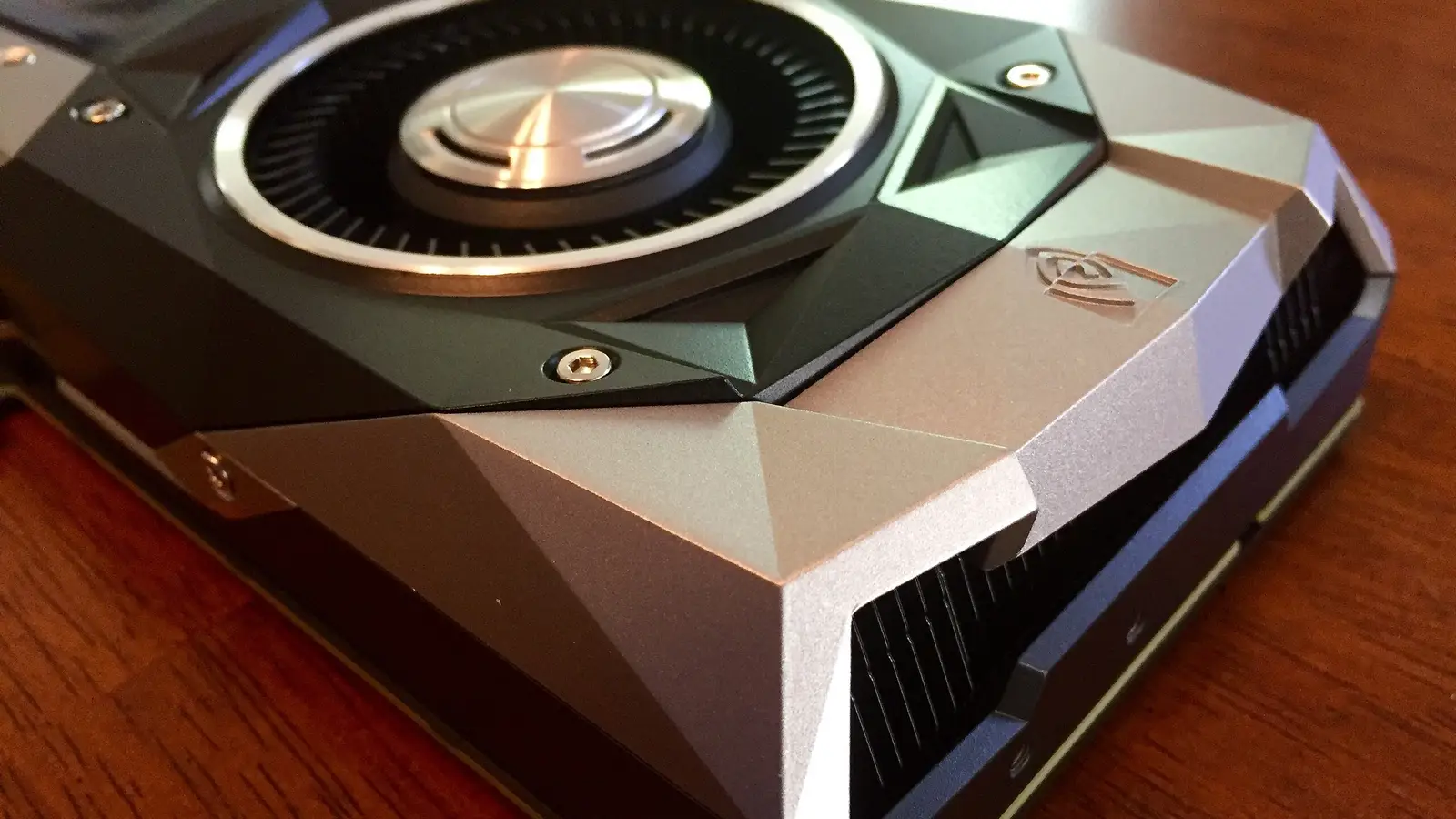Copyright XDA Developers

We all know that one PC gamer who is still refusing to let go of his once-great GPU that has, by all standards, reached the end of the line. Maybe you are that gamer who's holding on to your Pascal or Polaris graphics card, hoping to squeeze just one more year out of it. While making the most of your GPU and delaying an expensive upgrade is commendable, sometimes admitting the obvious is the smarter play. If you've been running an ancient graphics card, you'll probably be able to get a multifold increase in performance even with a budget or mid-range upgrade. So, here are 6 GPUs whose time has sadly run out. RX 6500 XT Scraping the bottom of the barrel This AMD graphics card is barely four years old, having launched in January 2022, but it was outdated even then. The RX 6500 XT was launched in a seller's market where GPU manufacturers were convinced gamers would buy anything available — and they were right. AMD shipped this abysmal GPU with 4GB of VRAM and a PCIe 4.0 x4 interface, hoping to cash in on a terrible market where the $199 MSRP would be seen as a saving grace. The sad part was that most people would probably have bought it at inflated prices, as was the case with every other GPU during that time. Launching a GPU with a 4GB framebuffer in 2022 was already insane, but what made matters worse was the PCIe 4.0 x4 configuration. A mere 4 lanes weren't terrible, but when paired with older PCs where only PCIe 3.0 was available, the RX 6500 XT suffered a significant performance hit. Due to this limitation, it performed worse than older GPUs like the RX 580 in many titles. If you were forced to buy the RX 6500 XT due to a lack of other affordable options, you've probably been struggling for a while now. Almost four years after launch, the RX 6500 XT is undoubtedly one of the GPUs that need an urgent upgrade. 4GB of VRAM is inexcusable at a time when people are running away from GPUs with 8GB of VRAM, so waiting for an upgrade is not an option anymore. GTX 1650 Super Still popular but no longer sufficient The GTX 1650 Super, along with the more popular GTX 1650, commands a combined 3.7% share in the Steam Hardware Survey. These GPUs were no doubt popular among budget buyers, at least until Nvidia stopped producing the GTX 16 series in early 2024. I used a GTX 1660 Ti for around three years, and it even handled my 1440p monitor in some titles. The GTX 1650 Super is still enough for many esports titles, but it comes woefully short if you wish to try anything demanding. Even at 1080p, you're limited to low and medium settings if you expect a smooth framerate. Again, the 4GB VRAM is prehistoric in 2025, and the overall performance is similar to what you get with the RX 6500 XT. Unlike the AMD card, however, the GTX 16 series doesn't support ray tracing. You also don't have access to Nvidia's DLSS upscaling, although you can use FSR 3 for some much-needed performance boost. Nvidia's 16 series cards were always supposed to slot in between the older GTX 10 and the new but expensive RTX 20 series. They served PC gamers well for a while, but in 2025, cards like the GTX 1650 and GTX 1650 Super are no longer enough for an enjoyable gaming experience in any demanding game. RX 580 The fine wine is going stale AMD's RX 580 wasn't a big improvement over the RX 480 — it was built on the same architecture — but over the years, it became a darling of budget gamers. The 8GB variant remained a strong contender among value-for-money GPUs that could handle modern games at a reasonable level. It also became a huge hit in crypto mining rigs owing to its 8GB VRAM and affordable MSRP ($229), and after the crypto boom died down a year after its launch, droves of RX 580s flooded the market for cheap. Everyone and their grandma were picking up the RX 580 for their budget gaming rig, and it seemed the fairytale would never end. Eight years after its launch, however, the RX 580 has firmly joined the ranks of veteran GPUs that need to step down. You can still get 60+ FPS in older titles, but in most recent games, it can't go beyond 30–40 FPS, and even with upscaling enabled, your 60+ FPS experience will be marred with the lowest-quality textures. In terms of hardware limitations, the lack of any ray tracing cores or support for FSR 3 means many newer titles look terrible, and no frame generation means you don't get to cheat the FPS either. Many recent titles don't even launch on the RX 580, and some tend to crash as soon as you reach the main menu. The RX 580 lies in the same performance class as the RX 6500 XT and GTX 1650 Super, and shares the same fate. GTX 1060 The people's champion has overstayed its welcome The GTX 1060 (6GB) was not only one of the most dependable GPUs of its generation, but also remained a crowd favorite years after its 2016 launch. It's still the 10th most popular desktop GPU on the Steam Hardware Survey list, beating the likes of the GTX 1660 Super, RTX 5060, and RTX 2060 Super. With the RTX 20 series GPUs receiving a lukewarm response thanks to being overpriced and peddling a technology that wasn't being used in many games at the time, the GTX 1060 was the "it" card for years. Even when the RTX 30 series announcement was welcomed, the pandemic and silicon shortage ruined what could have been a great launch — GTX 1060 owners kept using their trusted GPU. In the last two years, however, the GTX 1060 finally ran into a wall. The performance in the latest games started dropping to 30 FPS in many cases, and the 6GB VRAM became a big problem, even at 1080p. Nvidia even stopped driver support for the GTX 10 series cards recently, so the writing is on the wall. Long-time GTX 1060 owners are slowly but surely upgrading to GPUs like the RTX 5060, seeing that it's available for the same price that the GTX 1060 originally launched at ($299). This swap would essentially net you nearly a 3 times performance increase for essentially the same amount of money. If you factor in inflation, you're getting a pretty sweet deal, considering the RTX 5060 gives you access to the latest in Nvidia's ray tracing and DLSS feature set. GTX 1050 Ti Stop, he's already dead That's my own GTX 1050 Ti you see in the image, next to the GTX 1660 Ti I upgraded to in 2019. For two years, however, the humble GTX 1050 Ti was more than what I needed for my budget gaming PC. I wasn't playing any crazy, demanding games during that period; I was simply content with the upgrade over my 2014 HP laptop. I loved the fact that I could play Far Cry Primal, Dishonored 2, and Hellblade: Senua's Sacrifice on a budget GPU. Granted, I was on 1080p at the time, but these weren't lightweight games by any standard. Even when I upgraded two years later, it wasn't because the GTX 1050 Ti was struggling; I just wanted more performance. The GTX 1050 Ti was considered outdated even three years ago, let alone in 2025. The 4GB VRAM is worse than the minimum you should target, even for a 1080p gaming rig, and it doesn't support ray tracing or DLSS upscaling & frame generation. Many considered it an entry-level card even when it launched, and despite offering over 60–70 FPS (with upscaling) in some titles like GTA V and Fortnite, the GTX 1050 Ti can't compete anymore. It was a budget legend that remained somewhat relevant for years after launch, but in 2025, it's only good for 30–45 FPS in demanding games. GTX 980 The Maxwell legend deserves a rest While the iconic GTX 1080 Ti and even the GTX 1080 can still be considered decent in 2025, the GTX 980 should be given a peaceful retirement. The Maxwell card wasn't exactly cheap when it launched at $549 in 2014, eleven years ago, but its flagship-level performance, power efficiency, and new features made it extremely popular. It was the fastest single-GPU graphics card on the market until the GTX 980 Ti launched in 2015. While the GTX 980 isn't exactly terrible in modern titles like Cyberpunk 2077 and Red Dead Redemption 2 — it can edge past 60 FPS with upscaling — it's running on fumes in 2025. As you can expect, there's no ray tracing or DLSS upscaling here, and even the RTX 3050 often beats the 80-series Maxwell card. The 4GB framebuffer is no picnic either, posing a genuine bottleneck in demanding games, even at 1080p. Compared to other older-gen cards in the wild, the GTX 980 just doesn't look attractive anymore. Sure, you can stick with it for another year if you've already spent a decade with it, but the high-end Maxwell GPU is a shadow of its former self now. For $550 in 2025, you could get the RTX 5070 for a 4x performance jump, and that's a great deal in my book. You could even go bargain hunting for a used GPU, and still get great value for your money. So, if you have the budget, it's high time you bid goodbye to the GTX 980. How long should you stick with a graphics card? The right answer is that you should consider upgrading only when your GPU stops performing the way you expect it to. If your "outdated" GPU is still churning out acceptable framerates in esports or indie titles, who am I to question your choice to stick with your trusted card? However, when suggesting general recommendations, we need to consider GPU performance in modern titles, and whether an upgrade is worth the investment. If you can pay the same amount of money (notionally) as you did all those years ago, and get 3 or 4 times the performance, I consider it a great deal. If you agree, you'll probably want to upgrade your GPU if you have one of these in your system.



